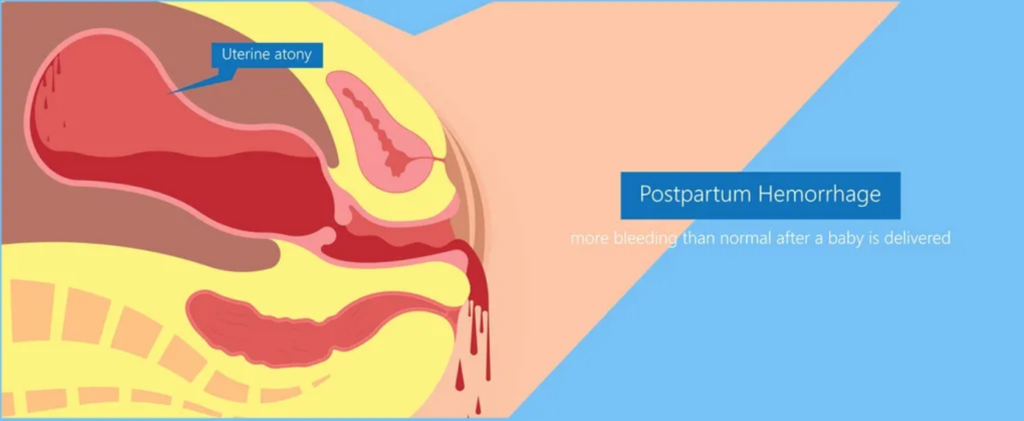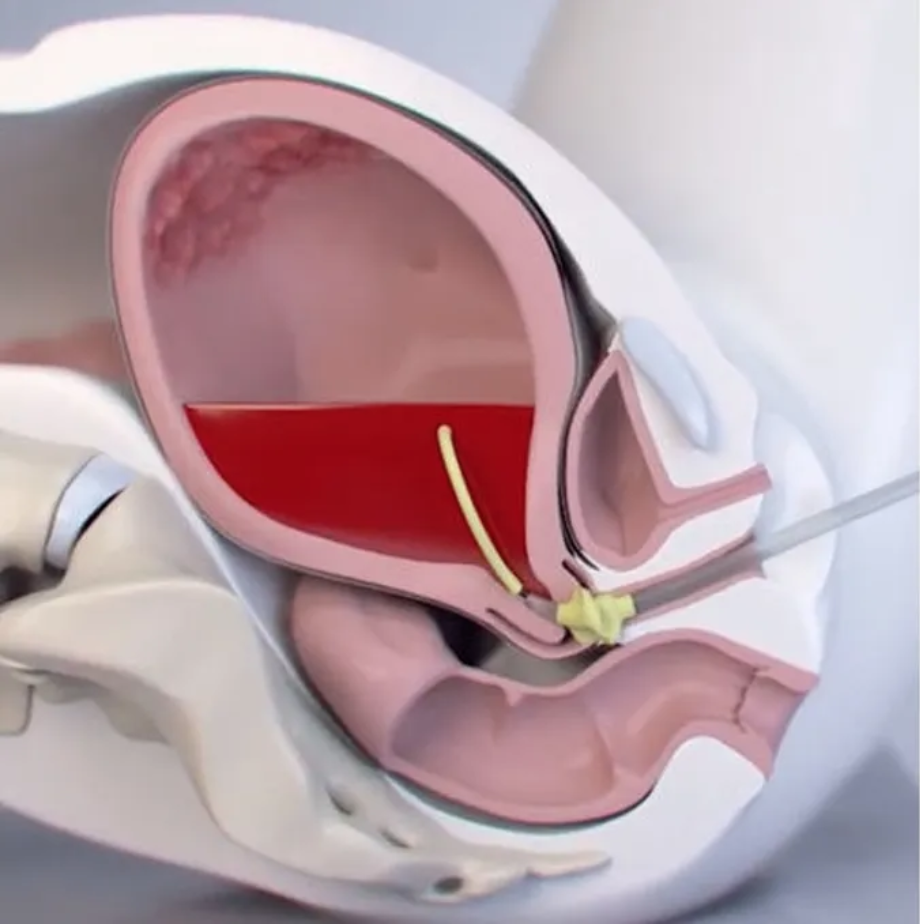Postpartum hemorrhage stands as the foremost cause of maternal morbidity and mortality globally. While numerous recognized risk factors are associated with pregnancy and delivery-related postpartum hemorrhage, there is comparatively less evidence regarding predisposing factors. Each year, approximately 140,000 women die from this complication. The World Health Organization (WHO) characterizes postpartum hemorrhage (PPH) as bleeding equal to or exceeding 500 ml. In comparison, The American College of Obstetricians and Gynecologists (ACOG) defines it as bleeding equal to or exceeding 1000 mL or PPH, resulting in signs and symptoms of hypovolemia within 24 hours of delivery.
Postpartum hemorrhage has categorically been classified into four causes, commonly referred to as “The Four T’s”:
- Tone
- Trauma
- Tissue
- Thrombin
Atonic uterus, accounting for 70% of cases, emerges as the most prevalent cause of postpartum hemorrhage, followed by bleeding resulting from perineal and vaginal lacerations postpartum (trauma) at 20%. Less frequently encountered causes include partial placental retention (10%) and coagulation dysfunction (1%), which align with the categories of tissue and thrombin in the mnemonic of the four T’s.
Anna Sörsjö Stevenazzi and her team recently conducted a retrospective study to understand the potential link between vitamin D deficiency and postpartum hemorrhage. The study, published in Acta Obstetricia et Gynecologica Scandinavica, challenges established ideas, prompting a re-evaluation of the relationship between vitamin D and maternal well-being.
Vitamin D and Pregnancy: An Intricate Connection

Research suggests that vitamin D deficiency might contribute to pregnancy complications, such as an increased risk of cesarean sections due to dystocia. The study explores whether vitamin D deficiency could be a predisposing factor for postpartum hemorrhage, particularly atonic hemorrhage. Focused on the serum concentration of 25-hydroxylated vitamin D at delivery, the research seeks to decipher the role of vitamin D in the intricate dance of maternal health.
The Study’s Approach
The retrospective translational study involved 1367 women in Sweden. Researchers analyzed the serum concentration of 25-hydroxylated vitamin D using the LIASON® 25 OH Vitamin D total assay method. Vitamin D insufficiency and deficiency were defined as concentrations below 50 nmol/L and 25 nmol/L, respectively. Primary outcomes, including postpartum hemorrhage and severe postpartum hemorrhage (within two hours after delivery), and secondary outcomes, like atonic postpartum hemorrhage, were meticulously examined. The analysis incorporated various adjustments, considering maternal, obstetrical, and neonatal factors.
Uncovering the Findings on Postpartum Hemorrhage

Surprising findings emerged from the study, challenging previous beliefs. Postpartum hemorrhage affected 31.3% of the women, with severe cases observed in 6.4%. Atonic postpartum hemorrhage, characterized by ineffective uterine contractions, occurred in 21% of the participants. Intriguingly, despite 57% of the women having vitamin D insufficiency or deficiency, no clear correlation was found with an increased risk of postpartum hemorrhage or atonic postpartum hemorrhage.
Reconsidering Maternal Well-being
The study’s results prompt a re-evaluation of factors influencing maternal health. Contrary to assumptions, vitamin D status at delivery does not reliably predict postpartum hemorrhage. This challenges the simplicity of the relationship between vitamin D and maternal outcomes, highlighting the need for continued investigations into the multifaceted aspects of pregnancy.
Conclusion
In navigating the complexities of maternal health, Anna Sörsjö Stevenazzi’s study sheds light on the absence of a direct link between vitamin D levels and postpartum hemorrhage. This challenges existing paradigms, encouraging a reassessment of factors influencing maternal outcomes. This study encourages researchers to delve deeper into the complexities of pregnancy, fostering hope for a future where we better safeguard maternal well-being through a more profound understanding.
Reference
Sörsjö Stevenazzi A, Pihl S, Blomberg M, Axelsson D. The association between maternal vitamin D deficiency and postpartum hemorrhage and uterine atony. Acta Obstet Gynecol Scand. 2024 Feb;103(2):286-293. Doi: 10.1111/aogs.14719. Epub 2023 Nov 14. PMID: 37960966; PMCID: PMC10823403.
About Docquity
If you need more confidence and insights to boost careers in healthcare, expanding the network to other healthcare professionals to practice peer-to-peer learning might be the answer. One way to do it is by joining a social platform for healthcare professionals, such as Docquity.
Docquity is an AI-based state-of-the-art private & secure continual learning network of verified doctors, bringing you real-time knowledge from thousands of doctors worldwide. Today, Docquity has over 400,000 doctors spread across six countries in Asia. Meet experts and trusted peers across Asia where you can safely discuss clinical cases, get up-to-date insights from webinars and research journals, and earn CME/CPD credits through certified courses from Docquity Academy. All with the ease of a mobile app available on Android & iOS platforms!







